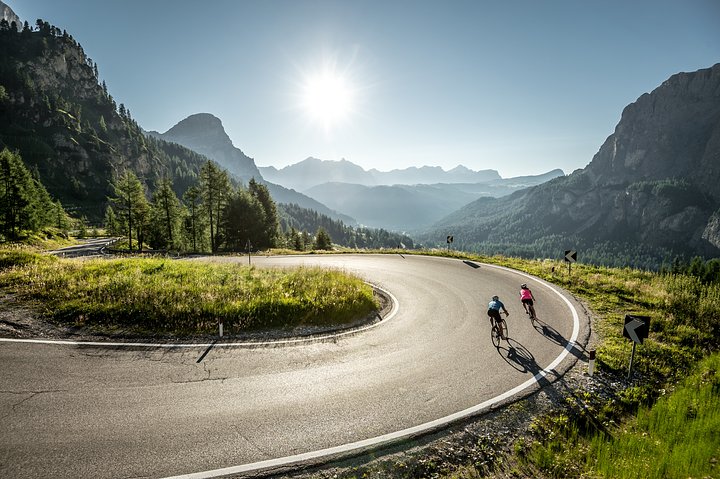Anyone who rides a bike regularly knows how important it is to devote time to train for upcoming trips. That’s why, when it comes to off-season cycling in the Dolomites we need to find some training to balance the spring and summer.
During the winter, due to cold, low light and adverse weather conditions, it is easy to leave the bike in the basement. But winter is crucial, since it is during this phase that one must work to improve overall physical condition, building the foundation that will allow one to withstand the workload of the spring and summer months.
Off-season cycling in the Dolomites: indoor cycling
Going on a cycling holiday requires year-round training, to plan your upcoming adventures. Training outdoors, however, is not always possible. But training indoors, is not the best option to really enjoy the surrounding nature, especially if you’re used to admiring wonderful panoramas outside. Here are a couple of ways to recreate your cycling workout, off-season, and build a solid, injury-free foundation for your favorite sport.
Off-season cycling in the Dolomites: alternative training
Trying new sports, other than cycling, is a very interesting choice. At the level of improving athletic skills they do not have much functionality (to learn to ride better you have to pedal), however, they allow you to train your muscles differently and in different conditions from what they are used to. In addition to having a different impact on the muscles, alternative sports have a beneficial effect on the mind, as they allow you to unplug from cycling. You can try running (long sessions for aerobic improvement or sprint workouts to work the muscles), swimming (light workouts, intended more as a pleasure than a training activity), roping, skiing.
Why is cross-country skiing and ski mountaineering good allies for cyclists?
If, in addition to biking, you love to go skiing and are already thinking about the next season in the snow, this article may be very interesting for you since the two sports are complementary.
It keeps you in tip-top shape during the winter months when most cyclists tend to gain a few pounds. It allows you to enjoy the breathtaking views with colors that only the mountains can provide.
Cross-country skiing and ski mountaineering allow you to develop all the muscles of the body, both lower and upper parts. A strong and stable back and core are key for those who spend many hours in the saddle every day. It is also an excellent way to increase lung capacity. The cardiovascular system is stressed, and you can use your heart rate monitor to check your pulse rate and work with the frequencies that the period requires, just like you would on a bicycle.
It is known that cross-country skiing and ski mountaineering, as well as cycling, are endurance sports. This means that in order to achieve good results, preparation will have to focus primarily on the development of endurance and specific techniques to make the best use of muscle glycogen and fatty acids, improve oxygen-carrying capacity, and make our gesture more effective, essential, and automated, thus reducing energy expenditure and allowing us to perform better.
Winter should not be an idle season for the cyclist, for it is at this stage that the foundation for future training is created, and those who prepare effectively will arrive at the threshold of spring more energized and motivated. The important thing, when riding in winter, is to protect yourself from the cold and have good bike lights during rides with low sunlight.
